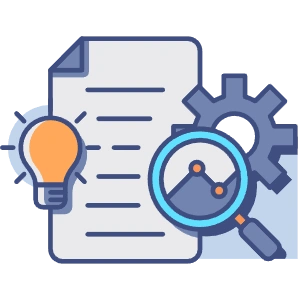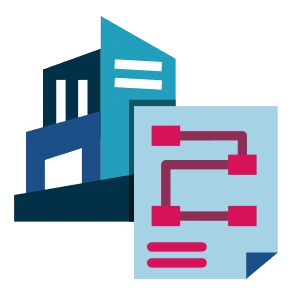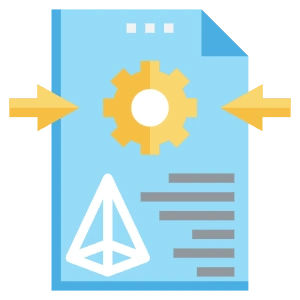Dapp Development
DApp (Decentralized Application) Development focuses on building applications that run on blockchain instead of centralized servers. Unlike traditional apps that rely on a single backend, DApps use smart contracts to automate actions, ensure data transparency, and eliminate intermediaries. This results in applications that are more secure, tamper-proof, and trust-driven.We design and develop DApps that enable businesses to digitize transactions, manage data transparently, and automate processes across multiple stakeholders. Whether you’re creating a DeFi protocol, NFT marketplace, DAO platform, supply-chain tracking system, or a Web3 product, our DApp solutions are built for scalability, security, and long-term usability.


Scalable DApp Ecosystem Development – Future-Proof Blockchain Applications
Scalable DApp Ecosystem Development focuses on building decentralized applications that are engineered for performance, long-term usability, and seamless growth. Instead of creating a single isolated DApp, we design an interconnected ecosystem where users, data, and digital assets move securely and efficiently across multiple components. Every DApp we build is powered by secure smart contracts, optimized architecture, and a scalable backend that supports high user activity without compromising speed or reliability. Whether you’re developing a DeFi platform, DAO, NFT marketplace, Web3 application, or multi-chain ecosystem, our development process ensures the system can grow as your user base increases.
DApp Development Lifecycle – From Concept Strategy to Product Launch
The DApp Development Lifecycle focuses on transforming an idea into a fully functional decentralized application that is secure, efficient, and launch-ready. Instead of just writing smart contracts, we follow a structured, end-to-end approach that includes ideation, architecture planning, UX design, blockchain development, testing, deployment, and post-launch support.

Discovery & Use Case Strategy
We begin by defining the purpose of the DApp—identifying the problem, business model, and blockchain use case. This ensures the solution is aligned with market needs and has a clear path to adoption.

Architecture Planning & Smart Contract Blueprint
We design the technical architecture, including smart contract workflows, blockchain selection (Ethereum, BSC, Polygon, Solana, etc.), data structure, and system integrations to ensure scalability and security.

UI/UX Design & Front-End Development
The DApp interface is designed to be intuitive and easy to use, even for users unfamiliar with blockchain technology. We build responsive and user-friendly interfaces that allow smooth interaction with smart contracts.

Smart Contract Development & On-Chain Logic
We develop secure, gas-optimized smart contracts that automate core functions inside the DApp. All logic is tested to prevent vulnerabilities, exploits, or manipulation.

Testing, Security Audit & Optimization
The entire system undergoes unit testing, smart contract audits, and stress testing to ensure it performs safely under high usage. Any vulnerabilities are resolved before launch.

Deployment, Integration & Post-Launch Support
We deploy the DApp on the mainnet, integrate wallets likeMetaMask/WalletConnect, and continue monitoring performance. Post-launch upgrades and feature enhancements ensure continued success.
Transparent and Secure DApp Ecosystems – Designed for Reliability and Growth
Transparent and Secure DApp Ecosystems focus on building decentralized applications where every transaction, interaction, and process is verifiable and protected by blockchain security. This approach ensures complete user trust while delivering an application architecture that is scalable and built for long-term growth.Instead of just developing a standalone DApp, we architect an ecosystem where smart contracts, users, and digital assets operate seamlessly across a secure infrastructure. Data is stored on-chain or through decentralized storage, ensuring full traceability and eliminating single points of failure.

Transparent DApp Architecture – Secure, Auditable, and User-First
Transparent DApp Architecture focuses on creating decentralized applications where every action is verifiable, every process is traceable, and every user interaction is secure. By combining user-centric design with blockchain transparency, this approach ensures that both functionality and trust are deeply embedded into the system. Instead of relying on centralized databases or hidden logic, the DApp operates on smart contracts that execute automatically, making processes tamper-proof and transparent to all stakeholders. Every transaction or data update is recorded on-chain, ensuring auditability and eliminating the possibility of manipulation or unauthorized changes.
FAQ
What is a DApp (Decentralized Application)?
A DApp is an application that runs on blockchain technology instead of centralized servers. It uses smart contracts to automate processes, making the system transparent, secure, and tamper-proof.
What types of DApps can you develop?
We build a wide range of decentralized applications, including:
DeFi platforms (staking, swapping, yield farming)
NFT marketplaces and minting systems
DAO platforms with governance features
Web3 authentication and crypto wallet–based apps
Supply chain and asset tracking systems
Which blockchain networks do you support?
We develop DApps on all major blockchain ecosystems such as:
Ethereum, Binance Smart Chain (BSC), Polygon, Solana, Avalanche, and custom private blockchains.
How secure are the DApps you build?
Security is our highest priority. We ensure:
Smart contract audits
Role-based access control
Secure wallet interactions
Protection from common vulnerabilities (reentrancy, flash loan exploits, etc.)
Will users need a crypto wallet to use the DApp?
Yes, most DApps require wallet authentication for user verification and on-chain transactions. We support MetaMask, WalletConnect, Coinbase Wallet, and custom wallet integrations.
Can you integrate the DApp with existing business systems?
Absolutely. We can connect your DApp with existing databases, APIs, CRMs, and payment systems using secure hybrid (on-chain + off-chain) architecture.
What ongoing support do you provide after launch?
We offer continuous support that includes:
Smart contract upgrades
Performance optimization
Feature enhancements
Monitoring and analytics
Security updates

